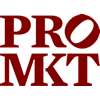Elizabeth Pollman reviews barriers for holding corporations and their fiduciaries accountable under corporate and securities law.
ProMarket is publishing a series of articles in collaboration with Stanford University’s Program on Capitalism and Democracy. These articles are based on the conversations that occurred during the Program’s 2025 Global Capitalism, Trust, and Accountability Conference. You can visit their website for additional content.
News headlines are filled with stories of accounting fraud, money laundering, embezzlement, falsified data, misleading disclosures, illegal marketing, safety failures, environmental disasters, data privacy violations, and more. Scandals like those involving Purdue Pharma, Boeing, Wells Fargo, BP, Duke Energy, PG&E, and Volkswagen highlight the widespread harms to shareholders and stakeholders that can occur from corporate misconduct and failures of oversight. Legal systems around the world approach this issue in distinct ways. Complex regulatory frameworks target specific areas of concerns ranging from employee safety to environmental harms. Beyond these regulatory frameworks, another question often arises: what does business law itself do to promote corporate accountability?
As we explored in a panel session at 2025 Global Capitalism, Trust, and Accountability Conference convened at Stanford University, we rely on two primary bodies of law in U.S. business law—securities law and corporate law—that serve different but interconnected functions in regulating corporate conduct and addressing misconduct. In theory, these two bodies of law provide a rigorous formal legal structure to hold corporate directors and officers accountable for corporate wrongdoing. In practice, however, legal standards, structural barriers to litigation, and the prevalence of exculpation and insurance mean that accountability is often elusive.
Securities and corporate law
Federal securities law governs the public markets through a mandatory disclosure regime. Public companies are required to provide investors with material information through periodic and event-driven reporting. This framework is grounded in the idea that information is essential to fair and efficient markets.
Enforcement of securities law occurs through both public mechanisms—such as investigations and actions brought by the Securities and Exchange Commission (SEC) and Department of Justice (DOJ)—and private litigation, particularly class actions. The flexibility of the materiality standard has led to an expansive scope of litigation. As a result, a wide range of corporate controversies from misstatements about business operations to internal cultural issues may give rise to securities fraud claims.
While private enforcement plays a meaningful monitoring role, it operates within a system characterized by frequent settlements, extensive insurance coverage, and limited personal liability. These dynamics raise important questions about deterrence and accountability, particularly for individual actors within firms.
Corporate law, by contrast, is primarily within the purview of state law. Under the internal affairs doctrine, a corporation’s internal governance and related disputes are governed by the law of its state of incorporation. Notwithstanding recent debates and charter competition, Delaware has a long history as the dominant jurisdiction with a significant share of incorporations, particularly large publicly traded corporations.
At the heart of corporate law are fiduciary duties owed by directors and officers to act in the best interest of the corporation and its shareholders. These include the duties of care and loyalty, with good faith considered a component of the latter. These duties guide decision-making and provide a basis for legal accountability when breached.
Yet the practical enforcement of fiduciary duties is limited. Delaware law, like other states, permits corporations to adopt exculpation clauses that eliminate personal liability for breaches of the duty of care. This leaves breaches of loyalty and bad faith as the primary avenues for potential liability—standards that are difficult to meet in litigation. Calibrating this system of corporate law for an optimal level of business efficiency and fiduciary accountability remains an ongoing policy challenge.
Barriers to corporate accountability
In addition to exculpation clauses, several other factors hamper actions to hold corporations and their fiduciaries accountable.
High legal standards for proof of wrongdoing is one challenge for plaintiffs. For example, a key doctrine in Delaware corporate law is derived from In re Caremark International Inc. Derivative Litigation, which governs director oversight of legal compliance systems. Under Caremark, plaintiffs must show either an utter failure of a board to implement monitoring systems or, having implemented such a system or controls, a conscious failure to monitor or oversee operations, such as a knowing disregard of red flags. Courts require a high level of scienter—intent or conscious inaction—for claims to proceed. Although recent years have seen a modest increase in Caremark claims surviving motions to dismiss, these cases rarely proceed to trial. The standard remains stringent, and the doctrine continues to reflect judicial reluctance to interfere with board-level discretion absent clear indications of bad faith.
Another defining feature of corporate law is the line it draws between business risk and legal risk. Courts defer significantly to directors’ business decisions under the business judgment rule, but they generally take failures to comply with legal obligations more seriously. This distinction, while doctrinally grounded and a bedrock principle of corporate law, can leave lingering concerns. Many business decisions that carry substantial social impact may not violate any specific law. At the same time, certain forms of legal noncompliance may occur in complex regulatory environments or in ways that raise questions about intent, oversight, and institutional culture.
The enforcement of fiduciary duties is also shaped by the institutional design of corporate law. Derivative suits against a company’s directors on behalf of the company must be brought by shareholders, who are often diversified and passive, with limited financial incentive to pursue litigation. The fees for plaintiffs’ attorneys, often paid by the corporation itself, raise their own issues particularly when they reach the level of “mega” awards.
Moreover, the dynamics of corporate litigation strongly favor settlement. Plaintiffs’ counsel may achieve favorable outcomes without the cost and risk of trial, and defendants avoid reputational damage and potential liability. Corporations and their insurers, likewise, often prefer early resolution to prolonged litigation.
Even strong cases typically result in settlements paid by the corporation or through directors’ and officers’ (D&O) insurance—reducing the likelihood of personal financial consequences for individuals involved. D&O insurance is a pervasive feature of modern corporate governance. It can cover legal defense costs and often funds settlements, even in cases involving allegations of oversight failure. These policies mitigate personal exposure for directors and officers, and they contribute to a system in which the legal process frequently resolves disputes without judicial determinations on the merits.
Conclusion
The U.S. corporate law system contains a robust formal structure of fiduciary duties and legal doctrines aimed at guiding and constraining corporate behavior. This architecture reflects a shareholder-focused model of governance that prioritizes board discretion and legal compliance, while limiting judicial intervention. The practical realities of enforcement, including stringent legal standards, structural barriers to litigation, and the prevalence of exculpation and insurance, make it challenging to ensure responsibility for misconduct. Personal liability for directors and officers is possible, particularly in egregious circumstances, but remains relatively rare.
Author Disclosure: The author reports no conflicts of interest. You can read our disclosure policy here.
Articles represent the opinions of their writers, not necessarily those of the University of Chicago, the Booth School of Business, or its faculty.
Subscribe here for ProMarket’s weekly newsletter, Special Interest, to stay up to date on ProMarket’s coverage of the political economy and other content from the Stigler Center.






